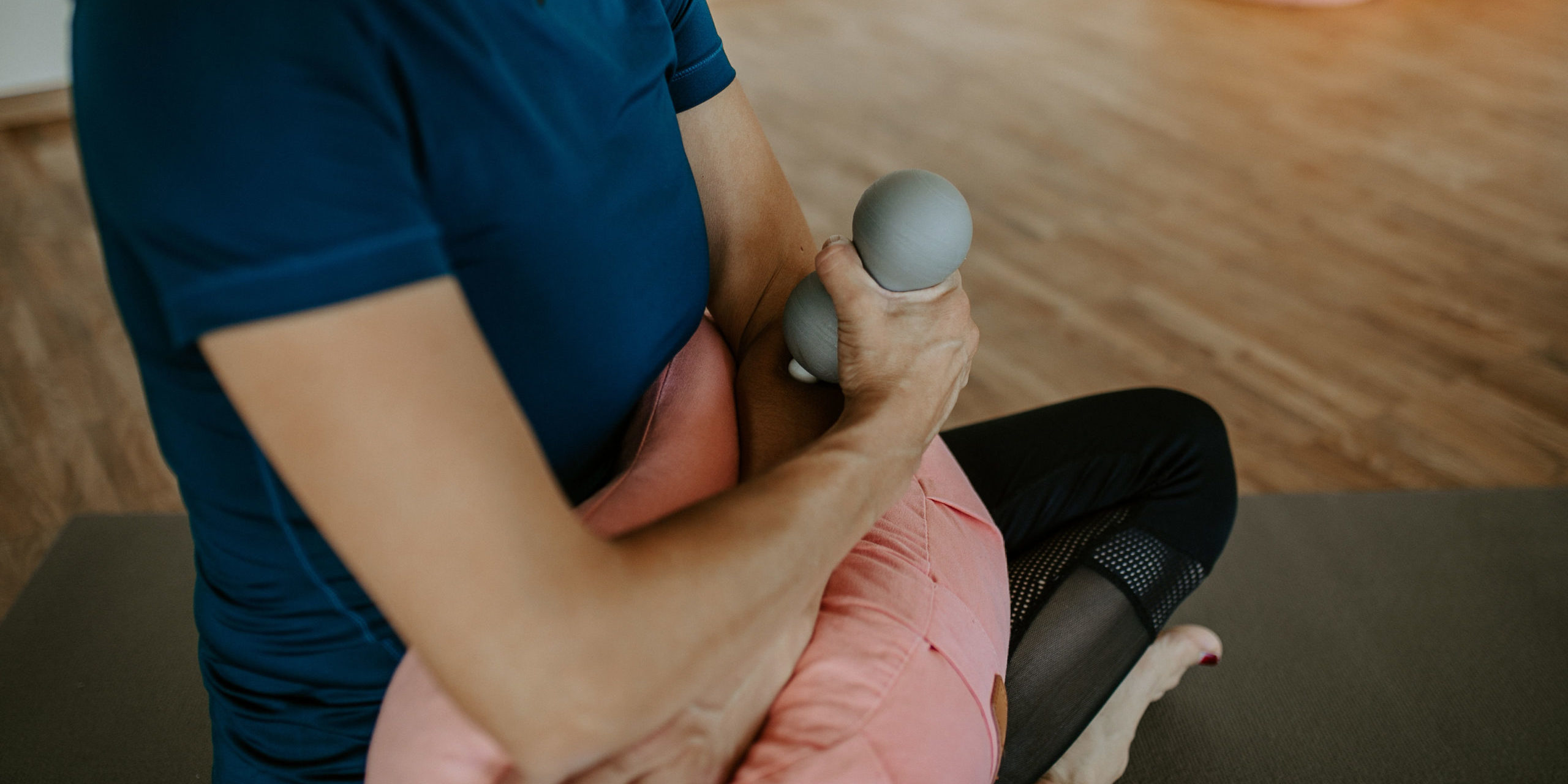Relieve pain and tension – treat your tennis elbow
Relieve tennis elbow pain & release tension – In conversation with physiotherapist Steffi Stiefvater
Hello, I’m Steffi Stiefvater, a physiotherapist with a penchant for effective methods of treating tennis elbow. My faithful companion is the Bodybone, a versatile training aid that is not only handy, but can also be perfectly integrated into my therapy.
Tennis elbow – causes and symptoms:
Tennis elbow, also known as mouse elbow, is caused by overuse, incorrect strain or sudden rotational movements. The affected extensor muscles of the forearm cause severe pain in the outer elbow.
Here are some of the symptoms:
- Sharp pain in the forearm
- Pain when closing the fist
- Restrictions on freedom of movement
- Loss of strength in fingers and hands
In addition to the symptoms listed, tennis elbow can also lead to restrictions in everyday life, as the pain often occurs during everyday activities. Grasping objects, turning door handles or holding a pen can be painful and affect quality of life.
It is important to react to these symptoms at an early stage in order to alleviate the discomfort and initiate effective treatment. The Bodybone offers a practical option for self-treatment and can help to improve quality of life by relieving pain and maintaining mobility.
Therapeutic approaches for tennis elbow:
I use various therapeutic approaches to treat tennis elbow:
- Analyse and avoid stressful factors:
A precise analysis of the stress factors is crucial. The stress factors that favour tennis elbow can be identified through a precise analysis. These include incorrect tennis or sports techniques, excessive and one-sided strain, incorrect equipment, lack of warm-up exercises, unfavourable workplace ergonomics and poor posture in everyday life.
Adjusting these factors is crucial to prevent further strain and promote healing. Adjustments in everyday life and sport can prevent overuse.
- Tennis technique training:
Tennis elbow is often triggered by incorrect technique. Targeted technique training can reduce the strain.
- Adjustments to club weight and grip strength:
Choosing the right club is crucial. Pressure and strain can be minimised with an individual fitting.
- Improve ergonomics at the workplace:
An incorrect workstation design can aggravate tennis elbow. An ergonomic adjustment supports healing.
- Cold or heat therapy depending on how acute the symptoms are:
Cold relieves acute pain, while heat has a relaxing effect on chronic complaints.
- Stimulation current, ultrasound and shock waves:
Physiotherapeutic measures such as stimulation current, ultrasound and shock waves can promote regeneration.
- Epicondylitis brace for relief:
An epicondylitis brace supports the relief of the muscle insertion at the elbow. This is an orthopaedic device that is worn on the elbow to relieve the muscle insertion and thus reduce the pain of epicondylitis (tennis elbow).
- Careful muscle stretching:
Gentle muscle stretches can release tension and improve mobility.
- Self-treatment with the Bodybone:
The Bodybone is not only extremely effective in therapy, but also for self-treatment. That is why I am particularly happy to recommend it to my patients.

Using the Bodybone correctly to treat tennis elbow
The Bodybone offers an effective option for self-treatment of tennis elbow. Targeted applications can relieve muscle tension and reduce pain. That’s why I prefer to show my patients the following two exercises:
Large-area tennis elbow massage between forearm and wall
One effective method is to massage a large area on the outside of the forearm. Position the Bodybone at painful points and roll it slowly against the wall. Repeat this a maximum of 15 times. This massage loosens the muscles, improves circulation and reduces tension in the area of the tennis elbow.
Treatment of tennis elbow through trigger point massage with the attachment:
For targeted treatment of trigger points, use the special attachment on the Bodybone. Place it precisely on the painful point and apply gentle pressure for about 20 seconds. This trigger point massage can specifically release tense muscles and thus reduce pain in the area of the tennis elbow.
It is important to repeat the applications regularly in order to achieve long-term improvements. The Bodybone allows flexible adjustment of the intensity so that the treatment can be customised to the needs and comfort of the user.
The ease of use of the Bodybone makes it a practical tool for self-treatment at home. By integrating these exercises into their daily routine, sufferers can actively help to alleviate their symptoms and improve their quality of life.
Successes in the treatment of tennis elbow with the Bodybone
The use of the Bodybone has proved to be a real game changer. Regular use has relieved numerous muscle tensions, eliminated trigger points and taken the strain off the tendons. My patients report an increased effectiveness of the training and therapy. For many amateur and professional athletes alike, the Bodybone has become indispensable.
Conclusion on Bodybone as a treatment method for tennis elbow
For me, the Bodybone is not just a tool, but a reliable partner in the treatment of tennis elbow. Its versatile application options not only enable effective therapy, but also preventative measures to maintain health. Tennis elbow, once a painful obstacle, becomes a surmountable challenge with the Bodybone. Try it out for yourself and give your training a boost!
You may be interested in this product from TOGU:
Bodybone https://www.togu.de/en/shop/healthy-training/lumbar-spine/249/bodybone

